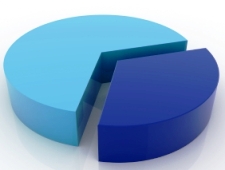 | « Back to article | Print this article |
 Festive season notwithstanding, the newsflow for the past fortnight hasn't been of an order that would inspire much in the way of celebration.
Festive season notwithstanding, the newsflow for the past fortnight hasn't been of an order that would inspire much in the way of celebration.
It's been one thing after another and almost all of it has been negative in its financial impact.
Market tends to discount expected information, good or bad.
It's the unexpected that can throw traders out of kilter and move prices suddenly.
So, let's start with the unexpected. Globally, the blow-up in Gaza is unexpected.
If it escalates, or if tension remains at present levels for much longer, it will, at some stage, start to impact energy prices.
Given that there is a seasonal spike in energy demand due to heating costs in the Northern hemisphere, this could be significant.
On general principle, going long on December crude could be a hedge.
Domestically, the deteriorating health of Bal Thackeray had created tension.
It was unknown how his followers, who have a history of violence under similar circumstances, would have reacted to his death on Saturday afternoon.
They rioted in 2001 when Thane politician Anand Dighe died of a heart attack.
If they impose a bandh in the coming days then, given the financial capital's history and demography, the fallout from such an event could be severe.
It is best to be braced for disruptions in trading.
In more normal news from around the world, the re-elected US President Barack Obama will have to find coherent, credible ways to tackle the so-called fiscal cliff.
How he does this, and what the Republican-dominated House of Representatives lets him do, will naturally be watched with a great deal of interest.
Meanwhile, Europe continues to look fragile as anti-austerity demonstrations rocked several nations.
The Economist has also just pointed out that France could be the next domino likening it to a time-bomb.
Right or wrong, this could mean a dark-lens-focus on the zone's second-largest economy.
Back in Delhi, the index of industrial production dipped in September, suggesting that the mild recovery in August had been a false dawn. Inflation stayed high with the consumer index at 9.65 per cent.
The point-to-point change in the wholesale price index dropped below eight per cent, which is lower than it's been for a while, but still too high for anyone's comfort.
The 2G spectrum auctions bombed.
After the government has subsidised Bharat Sanchar Nigam Limited and Mahanagar Telephone Nigam Limited, and offset previous license payments, etc, it will receive a pitiful sum.
One good thing about this was that share prices in the telecom sector gained.
The 2G issue could prove to be a further source of embarrassment for the United Progressive Alliance government in the winter session.
As things stand, it's unlikely that much in the way of substantive legislation will be passed in that session, and disruptions are likely.
However, nobody in the political establishment appears prepared for a general election yet so, it's likely that the government will survive.
The Gujarat Assembly elections could